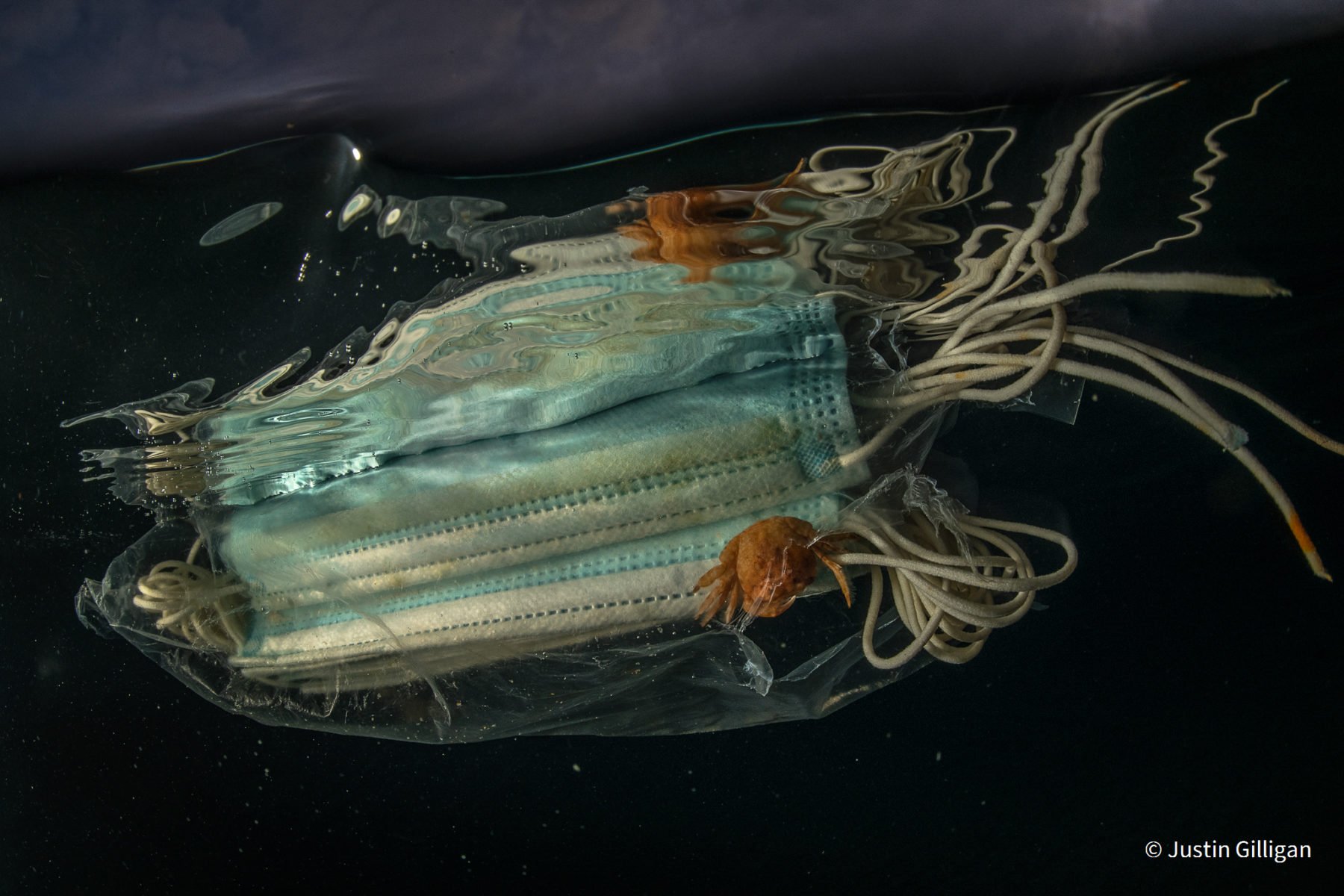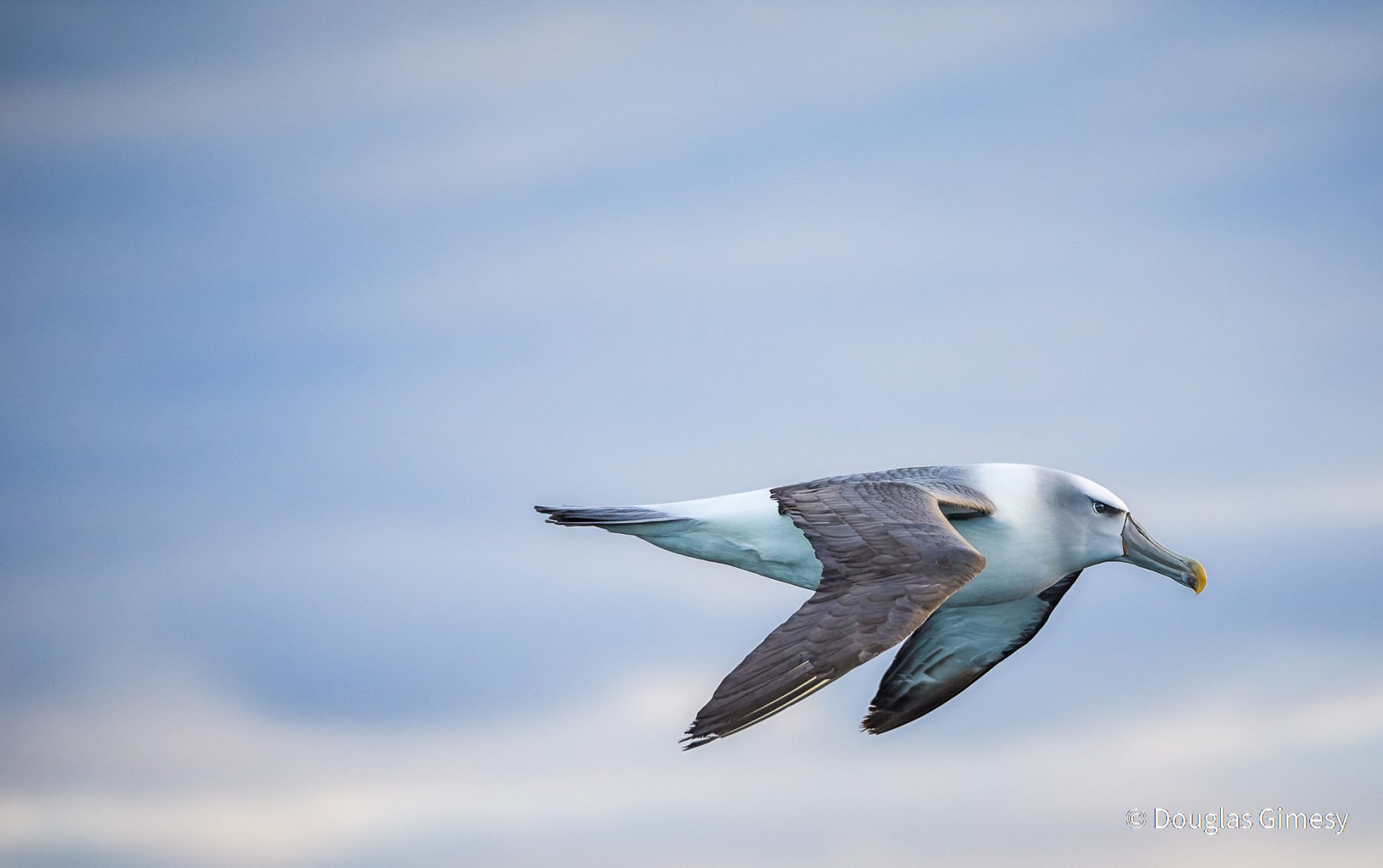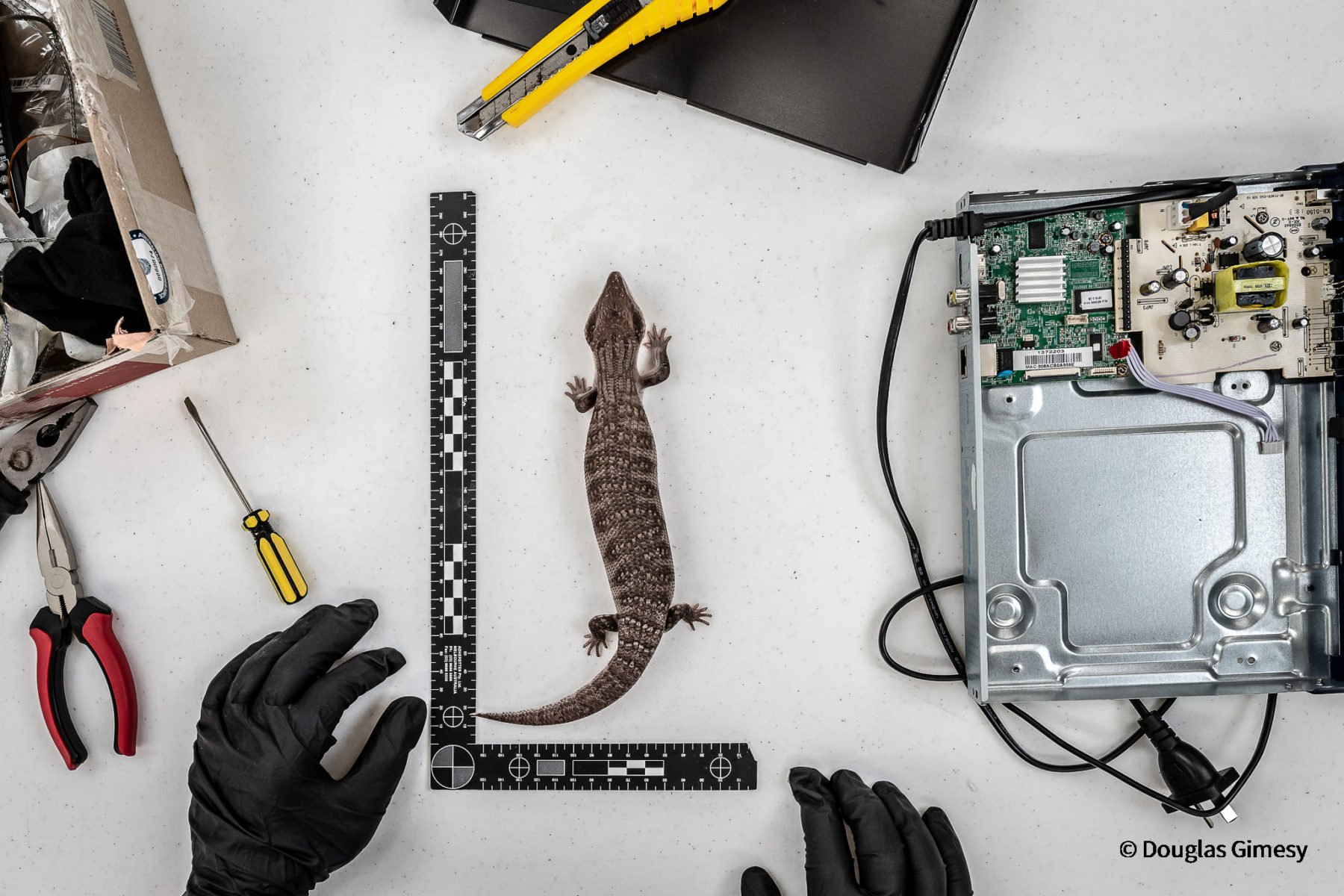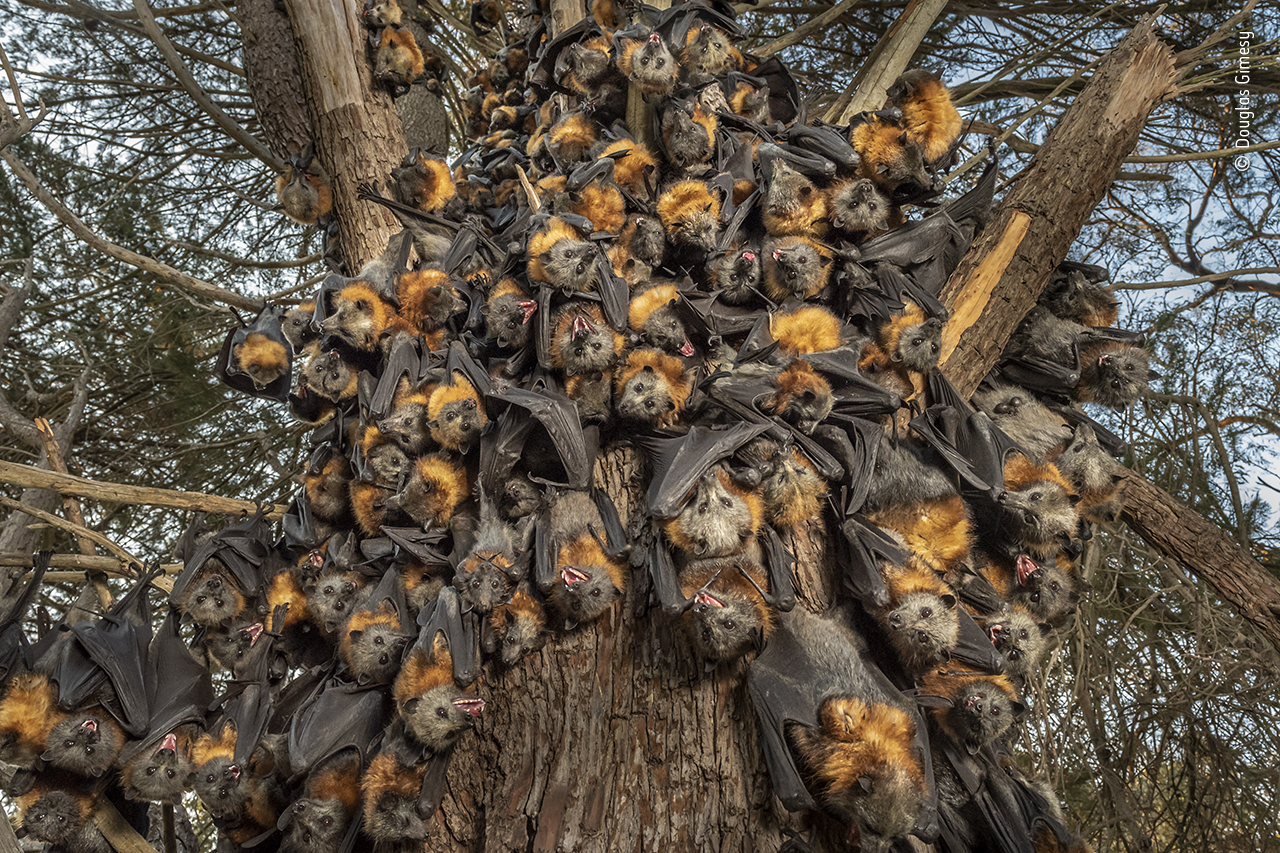Australian wildlife photographers recognised on world stage

Australian photographers have featured highly among the winners of this year’s prestigious global Wildlife Photographer of the Year awards.
Among them are Justin Gilligan and Doug Gimesy, both winners of our own Australian Geographic 2021 Nature Photographer of the Year awards.
Justin Gilligan
It was Justin Gilligan’s confronting photograph showing Colombus crabs (Planes minutus) trapped in face mask packaging in the waters of Lord Howe Island that earned him runner-up in last year’s Australian Geographic Nature Photographer of the Year awards in the ‘Our impact’ category.

Now, another image taken at Lord Howe Island, where Justin is based, has impressed the judges at this year’s Wildlife Photographer of the Year awards.
Justin’s photograph, titled ‘Rich reflections’, in which he created the reflection of a marine ranger among seaweed, has won the award’s ‘Plants and Fungi’ category.
With only a 40-minute window where tide conditions were right, it took Justin three days of trial and error before successfully capturing the image.

“It’s humbling to be recognised in this prestigious competition and exhibition,” Justin says.
“Seaweed forests support hundreds of species while capturing carbon and producing oxygen for our planet. But, just as warming water threatens our coral reef systems, it is also threatening our fragile seaweed forests.
“Being recognised in this competition provides an important platform to inspire and educate thousands of people around the world about critical conservation issues.”
Doug Gimesy
Melbourne-based conservation and wildlife photojournalist Doug Gimesy took out two accolades in last year’s Australian Geographic Nature Photographer of the Year awards.
The first was ‘Animal portraits’ category winner for his stunning image of a white-capped mollymawk (Thalassarche cauta) in flight over New Zealand’s Stewart Island.

Doug also won the ‘Our impact’ category for a photograph drawing attention to the cruel trade of wildlife trafficking, showing a blue-tongue lizard (Tiliqua nigrolutea) tragically stuffed inside a DVD player within a parcel bound for Asia intercepted at a Melbourne postage sorting facility.

But it was Doug’s series of grey-headed flying-fox (Pteropus poliocephalus) images that earned him two Wildlife Photographer of the Year Highly Commended awards.
These photographs highlight the impact of extreme heat on local bat colonies, all taken within 25km of Melbourne’s CBD.
The first image, ‘A caring hand’, shows an orphaned pup lying on a ‘mumma roll’, sucking on a dummy, and cradled in the hand of a wildlife carer.
“She was three weeks old when she was found on the ground in Melbourne,” says Doug.
“At eight weeks, the pup will be weaned onto fruit, then flowering eucalyptus. After a few months, she will join a crèche and build up flight fitness, before being moved next to Melbourne’s Yarra Bend bat colony, for eventual release into it.”

The second image, ‘A deadly huddle’, was taken during an extreme heat-stress event, as temperatures exceeded 43°C.
“The flying foxes descend from the safety of the tree canopy in a desperate search for somewhere cooler and less exposed,” says Doug.
“Ironically, and sadly, this behaviour results in what experts call ‘clumping’ where large numbers of bats congregate in close proximity, and with no evaporative cooling they become even hotter. This behaviour is often a precursor to mass deaths, where one may fall, taking others down with them.
“On the ground, exhausted, and unable to climb, the bodies pile upon each other compounding their heat stress and suffocating some. Sadly, on this day hundreds of bats were piled on top of each other, dead or dying, at the base of several trees.”
Greyheaded flying-foxes, endemic to eastern Australia, are not only facing the threat of heat-stress events, but also destruction of their forest habitat.
“My hope is that the images I take and the information I share will inspire people to stop, think, and treat the world with greater kindness,” says Doug.
The Wildlife Photographer of the Year exhibition, on loan from London’s Natural History Museum, is now on display at The Australian National Maritime Museum in Sydney.





